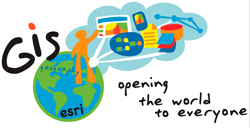
Those involved in the GIS field all maintain a fairly vague, but accurate idea about exactly what GIS is. For the 25 years it has experienced major development, it has undergone numerous evolutions from very simple mapping progresses, to a period of reliance on applications and application technology, and then now, where GIS dominates multifaceted research methods by documenting changes, cause-effect, and other spatial data. However, the stigma of GIS as a system relying on application technology lingers for those that are less intimate with GIS. For many, it is mainly a way for people to map out bus routes, find their way from X to Y, or something akin to Google Earth, which, though handy and innovative, is mostly used for entertainment than research. More accurately, GIS is geographical information science, not a system for geographical information.
The content of GIS is determined by natural human curiosity and need. Investigation into new GIS mapping methods usually has resulted from necessary enhancement on old techniques or the addition of new ones so that data management and analysis of a project can be completed. As data collection has grown more complicated, GIS science has gone from using simple algorithms to mathematical computations that are much more easily done by a computer than by man. Taking the natural, raw world and all its variation and crunching it into a map of numbers and labels is one of the most difficult and integral parts of the management process. This brings about the question of whether GIS is simply a way of transferring data from one technology to another. Essentially, GIS compiles data needed to be analyzed from our surroundings and recreates it in a more simplified form, so it’s a logical conclusion, but not entirely correct, as GIS itself can stand as a science. At this point, the science of translating data to map is what gives GIS a name as a research science.
Part of the reason for this expansion lies in the advances of collection sciences. New, advanced cameras and satellite imagery makes it easier to capture large amounts of data at a time for analysis. The electronic screen has allowed for maps of much higher resolution, especially compared to original cartography. Computers can store vast amounts of data and keep it in a concise location, something never possible before. Modeling data for GIS does distort the data in some way, no matter how precise the measurement. The exact location of an object is subject to the interpretations of the people recording its position, so there is a suspension of belief in drawing conclusions from GIS data. It isn’t infallible data, but it is gathered as precisely as possible.
So, while great strides have been made in GIS because of its parallels to technology, its dependence on technological growth does not make it continuously an application driven system. GIS is a science based on research, analysis, and modeling of data collected to serve the need of people in a variety of situations. However, the more strides made in GIS, the more mystery is opened up. There will always be new fascinations opened up with the conclusion of another idea, which is the driving force behind GIS and the reason for its continuation.
Response to: http://www.pkugeosoft.org/uploads/GIscience.pdf


It is always difficult for people to understand GIS as a field and further as an academic field. Like Geography, GIS is an approach based field. It is a field based on how you study a subject and not the subject itself. For example someone can be a GIS expert who focuses on hydrology. People will understand them as a hydrologist, even if there research is on GIS approach and methods in hydrology. On the social side you can see the same idea, where someone maybe a GIS expert who focuses on population studies. The average person will see them as a demographer, even if there research is actually based on GIS approach and methods in population studies. This is why we see the labs in our class vary from so many disciplines. The uniting factor is the approach that we take in studying, it is a GIS approach. This confuses people, but the way you sum up the article gives a better picture in what make GIS a Science.
ReplyDeleteYour last paragraph does indeed express the concept of GIS as a science clearly. It certainly bettered my understanding! Having just recently been introduced to the field of GIS, it was difficult for me to understand GIS as a science. For me the key was in making the connection between GIS as an approach and its use to solve problems, a connection which makes it possible to understand GIS as separate from the technology it uses.
ReplyDelete